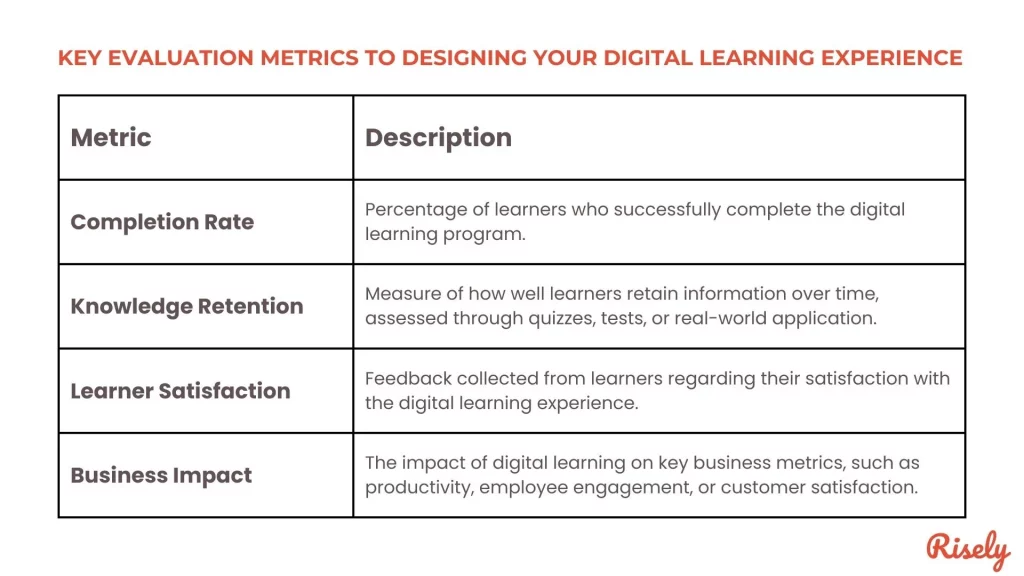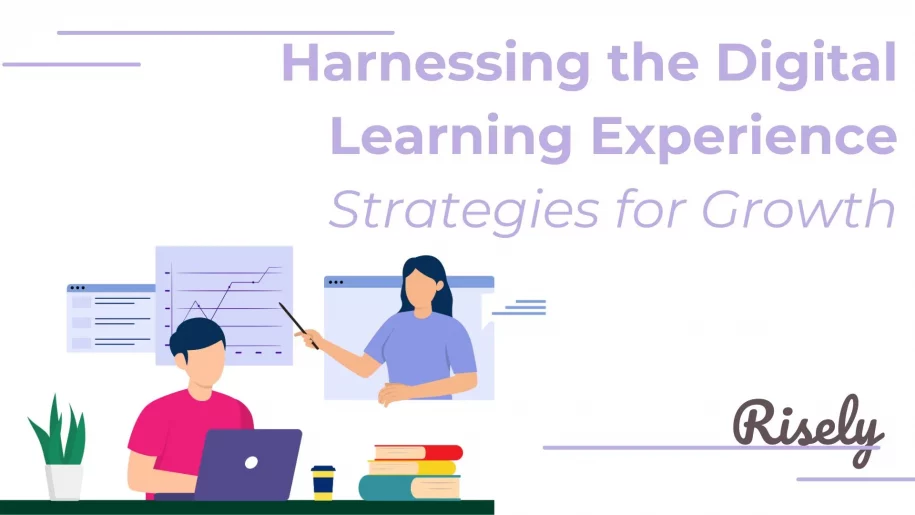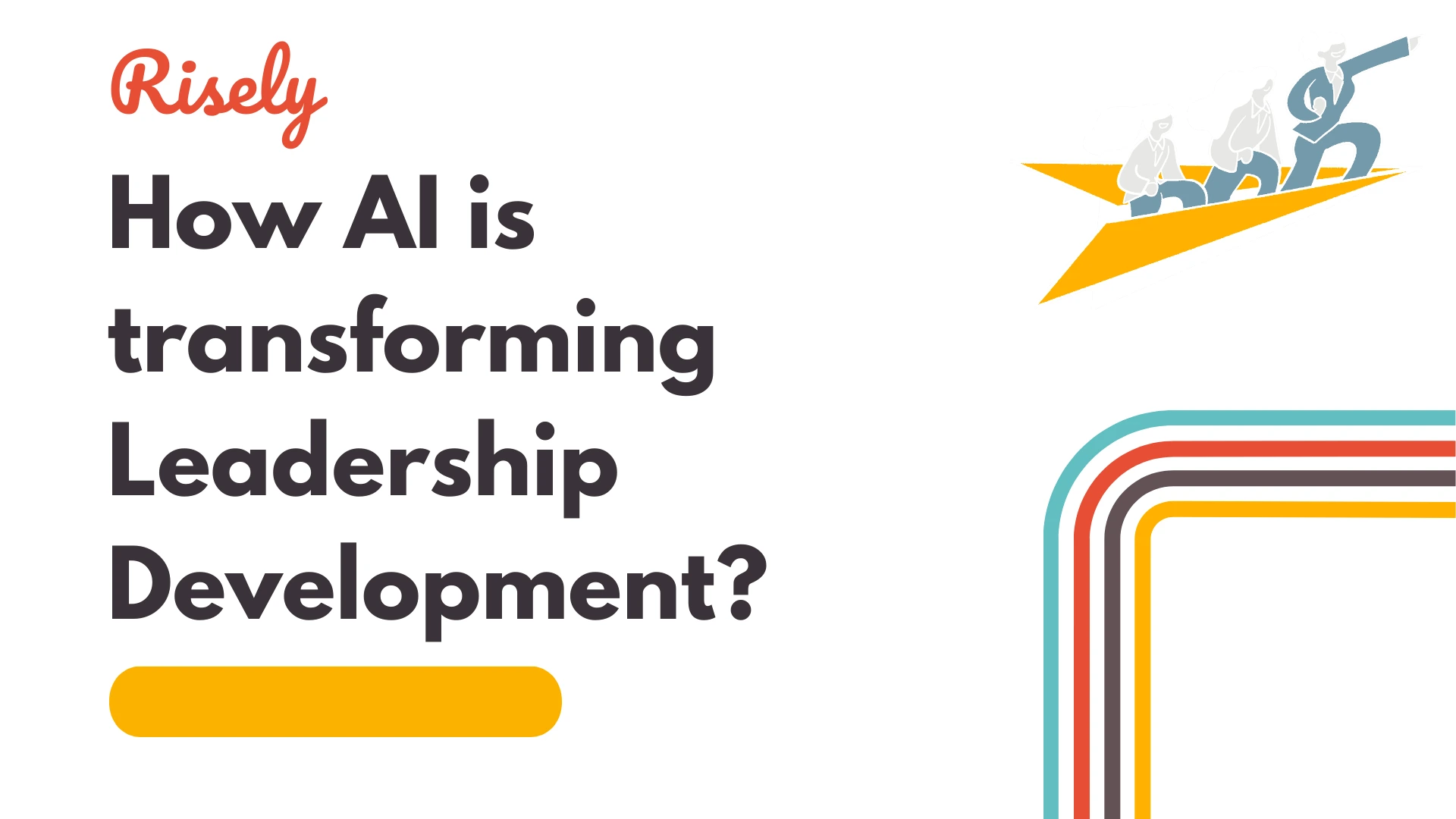Harnessing the Digital Learning Experience: Strategies for Growth
Today, technology is more or less involved in almost every single aspect of work life; L&D isn’t an exception. Traditional methods—like sitting in classrooms or navigating outdated e-learning modules—just don’t cut it anymore. Employees now expect learning to be as flexible, engaging, and personalized as the fast-paced environments they work in every day. That’s where the digital learning experience comes in, offering a fresh, transformative way to approach employee development. For L&D leaders, embracing a digital-first mindset isn’t just a choice anymore—it’s a must to keep up and stay ahead. In this blog, we’ll explore what makes digital learning different from the old-school methods, why is it so critical for organizations, and how you, as an L&D professional, can use it to build a culture where learning is constant and impactful.Understanding the Digital Learning Experience
The idea behind the digital learning experience is flexibility and personalization, giving your employees the tools to learn through online courses, webinars, simulations, and mobile apps—whenever and wherever it suits them. In a fast-moving work environment, that approach helps make sure learning fits seamlessly into daily routines. But let’s get real: traditional approaches to learning and development have not kept pace. For most organizations, only the top 10% of managers get access to one-on-one coaching; the majority of your workforce doesn’t get tailored support. For those who do get access, these sessions may feel time-consuming and uncomfortable. This is where digital learning fills the gap. Digital tools, like Risely’s AI Coach Merlin, offer personalized coaching to every manager at any moment in time when they need it. There’s no pressure or fear of judgment and gossip-just private, flexible support available around the clock. Tools like these meet managers where they are, letting them grow and develop at their own pace, on their own terms. This shift to digital learning for the HR and L&D professional means a more inclusive and scalable environment. You are no longer restricted to helping just a handful of top executives, but instead, you can now help every manager in your organization through personalized effective coaching that fits their schedule and needs.How Are Digital Learning and Traditional Learning Different?
Digital learning and traditional classroom learning are very different. They have unique ways of delivering lessons and provide different learning experiences. The traditional classroom needs face-to-face teaching. In contrast, online learning uses digital tools and platforms to share educational content. This difference greatly affects learning outcomes. A major advantage of digital learning is flexibility. You can access study materials anytime and anywhere as long as you have the internet. This helps many people fit learning into their busy lives. Traditional classrooms, however, need you to be present in a specific place at certain times. Digital learning also personalizes your learning experience. You can move at your own speed and work on what you need assistance with. Using videos, interactive activities, and learning tools keeps you engaged and helps people learn in ways that suit them best. On the other hand, traditional classrooms usually offer the same lesson to everyone.Key Components of a Comprehensive Digital Learning Strategy
A successful learning and digital strategy requires thoughtful planning and attention to detail about the digital aspects right from the start. It begins with a clear understanding of your organization’s goals and how digital learning aligns with them. It’s all about creating a learning experience that not only fits but also drives those goals forward. Instructional designers play a crucial role in bringing these digital experiences to life. They combine the art of teaching with the science of learning to create effective educational experiences. They craft engaging and impactful content that helps learners truly absorb and retain what they learn. By following best practices, such as using multimedia, designing interactive exercises, and offering personalized feedback, you can ensure your digital learning strategy not only works but resonates with your team on a deeper level, making learning both enjoyable and effective. Listed below are a few key things to keep in mind when planning your digital learning experience:- Clearly Defined Learning Objectives: First, you need to figure out the specific skills or knowledge that learners need from the digital learning.
- Engaging Content Development: Make sure to create high-quality content that fits your target audience and the learning goals.
- User-Friendly Platforms and Technologies: Choose learning platforms and technologies that are easy to use, accessible, and help deliver engaging learning experiences.
How to Prepare for a Digital Learning Transformation?
Shifting to a digital learning experience starts with taking a close look at your current learning setup. It’s about identifying areas that could use improvement and fostering a culture that embraces new technology in learning. Getting leaders, like yourself, involved is crucial to making this transition successful. When you champion digital learning, you create an environment where it’s not only accepted but encouraged. Emphasizing the benefits, providing appropriate tools, and encouraging an innovative culture can make this shift easier by ensuring that your team members are supported in adapting to this new way of learning.Essential Tools and Resources for Digital Learning
The digital learning world is full of tools and resources that can truly elevate the learning experience. A Learning Management System (LMS), for example, gives you a central hub to share content and track learner progress. Another example is Learning Experience Platforms (LXP) that empowers employees to take charge, as they get to decide what they want to learn, when they want to learn, and how it will happen. Whereas, video conferencing tools bring live virtual classes right to learners’ screens, showing how essential technology is in modern learning. Interactive whiteboards and screen-sharing features make it easy for learners to collaborate and stay engaged. With Virtual Reality (VR) and Augmented Reality (AR), you offer immersive simulations that bring practical skills to life. And of course, mobile learning apps give learners the flexibility to access materials anytime, anywhere, as long as they’re connected. Choosing the right tools comes down to knowing your learning goals, understanding your audience, and considering your budget. It’s important to pick technologies that are user-friendly, scalable, and fit seamlessly with the systems you already have. This way, you create a learning experience that’s not only engaging but easy for everyone to navigate.Identifying the Role of a Digital Learning Specialist
As an L&D professional, having a digital learning specialist on your team is essential for bridging the gap between traditional learning and modern digital solutions. These specialists work closely with you to ensure that there’s an appealing, technology-based learning experience that fits the goals of the organization and is really engaging for employees to effectively absorb new skills. However, their responsibilities go beyond just the creation of the content. They collaborate with subject matter experts and instructional designers in customizing learning into various styles and needs. Further, they will guide your managers on how to use digital tools as part of their learning. With their guidance and ongoing support, your managers will feel empowered to deliver impactful learning experiences that drive real results for your team.Why is digital experience key to Learner Engagement?
In our tech-savvy world, employees expect more from their learning experiences. Digital learning addresses this need, making learning not only effective but also engaging and fun. For example, imagine rolling out a new software tool. Instead of a dull lecture, you could use interactive modules with video guides, hands-on simulations, and quizzes. This approach lets employees dive in and practice without any pressure. When designing digital learning, break content into bite-sized chunks with clear goals. Think of a leadership training program where each module focuses on different skills like communication or team management. Include interactive features like role-playing exercises and real-time feedback to keep things lively. Collaborative activities, like virtual team projects and discussion forums, can foster a sense of community and shared learning. Add a touch of gamification with points or leaderboards to make progress feel rewarding. By making digital learning interactive and personal, you ensure that employees stay engaged, retain information better, and apply new skills more effectively. This not only makes learning enjoyable but also drives better results for your organization.Step-by-Step Guide to Designing Your Digital Learning Experience
Building a successful digital learning experience requires a thoughtful, clear approach that aligns with both your learning goals and the needs of your team members. By following a structured process, you can ensure your digital learning initiatives are well-planned, engaging, and effective in delivering the outcomes you’re aiming for.Step 1: Assessing Your Current Learning Environment
Below are some questions that will help you gauge your learning environment:- What learning programs are currently in place?
Are they effective, engaging, and easy to access? What parts of your current setup can be enhanced with digital tools? - How are learners engaging with the content?
Are employees actively participating, or is engagement low? What feedback have learners provided about their experience? - What learning outcomes do I want to achieve?
Do the current programs align with your organizational goals? How can digital learning better support these objectives? - How is knowledge being measured?
Are assessments accurately gauging how much employees have learned? Are there ways to improve this through digital methods like quizzes, simulations, or feedback loops? - What challenges or gaps are present in the current system?
Are there specific areas where learners struggle or lose interest? Where can digital learning fill these gaps and make the learning journey smoother? - How easily can learners access content?
Is content available when and where employees need it? Can digital learning tools like mobile apps or on-demand videos help improve accessibility?
Step 2: Defining Your Digital Learning Objectives
Clear learning objectives act as a guide in shaping an effective digital learning experience. Objectives should be SMART: specific, measurable, achievable, relevant, and time-bound. For example, instead of a vague goal like “employees should understand leadership,” a better objective would be, “By the end of this course, employees will apply three leadership strategies in team meetings to improve collaboration, as measured by post-training assessments and peer feedback.” This clear focus helps align learning activities with measurable outcomes. As you develop these objectives, keep in mind what level of information should be retained by your team and how you will track their progress. Will they need to apply what they’ve learned in real-world scenarios, or is a foundational understanding sufficient? By focusing your objectives on concrete, relevant and specific purposes, you avoid overwhelming employees and maintain learning centered around the key areas. Of course, it is equally important not to overestimate one’s ambitions when it comes to digital learning objectives. Break down unwieldy topics into smaller, more digestible modules. Check progress regularly through quizzes or peer feedback so as not to make learners feel hurried. In this way, the objectives being practical and focused allow for more reasonable and effective digital learning that truly delivers the results one wants.Step 3: Selecting the Right Technologies and Platforms
Selecting the right technologies and platforms is key to a successful digital learning program. Learning Management Systems (LMS) like Moodle to offer flexibility in managing and delivering content, while video conferencing tools such as Zoom or Microsoft Teams are crucial for live interactions, attending masterclasses on particular skills and virtual collaboration. These tools can enhance your digital learning environment by supporting a range of content delivery and engagement methods. When choosing these technologies, consider the needs of your team, the type of content you want to share, and the budget. Ask yourself the following questions: What features are essential for your learning objectives? How user-friendly are these tools for both learners and administrators? With this in mind, choose those platforms that best fit your needs and provide the resources you will need, making the learning process more valuable.Step 4: Creating Engaging and Interactive Content
Creating engaging and interactive content is key to making digital learning effective and enjoyable for your team. Videos, charts, interactive quizzes, and games can be mixed together to ensure the interest of the team is not lost in the process and help them remember what they’ve learned. Break complex topics down into smaller, more digestible pieces, using real-life examples and stories that make the content more relatable and memorable. As convenient as it is, digital learning can be a little isolating at times, which may reduce peer-to-peer interaction. To this end, add collaborative features in the form of group projects and discussion forums to enable them to work and communicate with each other in a joint effort. This will create some sense of community among your team members. Don’t forget accessibility: make sure your digital learning tools work across different devices and offer options for diverse needs, such as subtitles or alternative text. This will make sure that all your team members can have access to and benefit from the digital learning experience.Step 5: Implementing and Evaluating the Digital Learning Experience
Implementing a digital learning experience requires careful planning and clear communication. Start by explaining the benefits to your team—how digital learning offers flexibility, engagement, and personalized experiences. Then, provide hands-on training and support on how to use new tools and platforms. To gain stakeholder approval and secure the budget, focus on the merits of digital learning, such as improved skills, higher engagement, and better business outcomes. Use data and case studies to demonstrate the return on investment and alignment with organizational goals. Be patient with those who are not too familiar with technology. Give them small training sessions, explaining how the introduction of digital learning will ease their tasks and speed up the work. Be open to addressing whatever concerns they might have and giving support until they are comfortable with the switch. Regularly assess your digital learning program for success through assessments, surveys and data analysis. Look for increased engagement, better application of skills, and positive feedback. If you find resistance, listen for specific concerns, clearly articulate the benefits, and offer additional support to make the change easier. Given below is an example of a table summarizing key evaluation metrics:
Conclusion
In conclusion, using digital learning is very important for growing education. By using the right tools, resources, and methods, you can make learners more engaged and create a fun learning space. It is important to know the differences between traditional and digital learning to plan a good digital learning experience. Following a clear plan to assess needs, set goals, choose technologies, create content, and check the learning process will help you make a good digital learning change. Remember, the digital learning experience is essential for boosting learner engagement and reaching good educational results.Reimagine learning and development for your team with Risely’s free strategy template!
Grab your free copy today and kickstart your journey toward growth.
AI and Leadership Development: Driving Synergy for Growth
AI and Leadership Development: Driving Synergy for Growth You know the frustration all too well. Your organization invests thousands in…
How Are AI Learning Platforms Transforming Leadership Development?
How Are AI Learning Platforms Transforming Leadership Development? As an L&D leader, you’re likely familiar with this frustrating reality: 82%…
5 Essential AI Skills for L&D Leaders
5 Essential AI Skills for L&D Leaders According to LinkedIn’s 2025 Workplace Learning Report(1), 71% of L&D professionals are now…
How to Create a Course with AI: A Guide for L&D Professionals
How to Create a Course with AI: A Guide for L&D Professionals According to a McKinsey survey(1), only 11% of…
Building an Ultimate Leadership Development Action Plan
How to Build a Leadership Development Action Plan? Having a strong Leadership Development Action Plan is more critical than ever…


